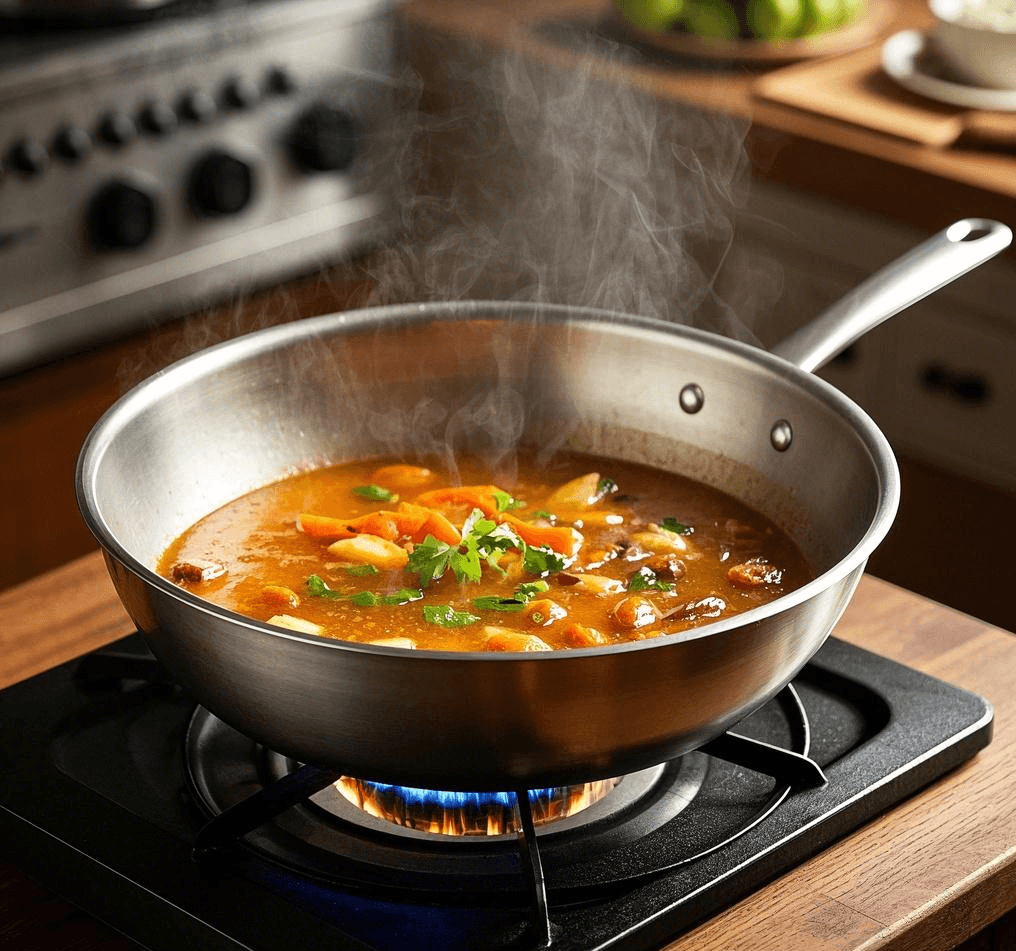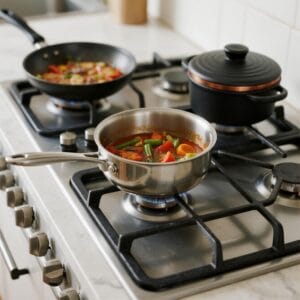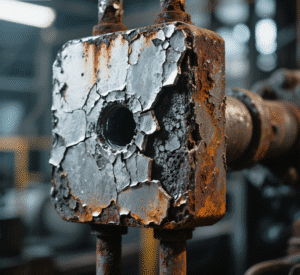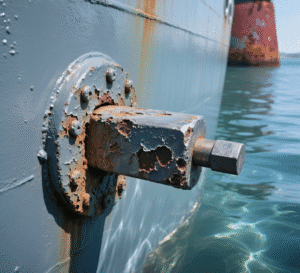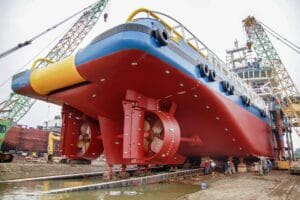Introduction: Comparing heat distribution across cookware types.
Heat distribution is one of the key factors in achieving consistent cooking results. Triply cookware, cast iron, and non-stick options each have unique properties that impact how heat is spread across the cooking surface. But how does the heat distribution of triply cookware compare to that of cast iron and non-stick pans?
Triply cookware offers superior heat distribution due to its multi-layer construction, which ensures even cooking temperatures, unlike cast iron and non-stick cookware.
In this article, we’ll break down how the heat distribution in triply cookware compares to that of cast iron and non-stick cookware.
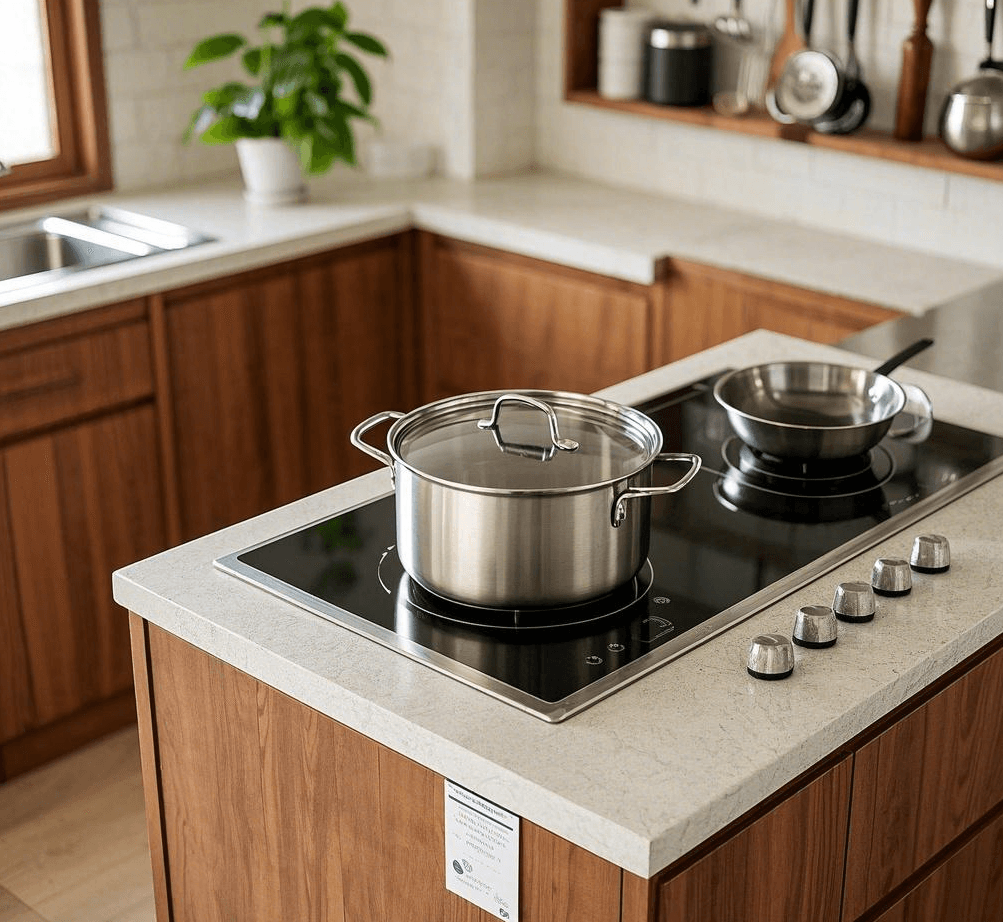
How Does Heat Distribution Work in Triply Cookware?
Triply cookware is designed with a multi-layer construction, usually consisting of stainless steel on the exterior, an aluminum core, and stainless steel on the interior.
- Even Heat Spread: The aluminum core is the key to triply cookware’s superior heat distribution. Aluminum is an excellent heat conductor, which ensures that the heat is evenly spread across the entire surface of the cookware. This results in reduced hot spots and more uniform cooking, whether you’re searing, frying, or simmering. For more on the benefits of triply cookware, see Triply vs Sandwich Bottom Cookware.
- Heat Retention: Triply cookware also has good heat retention, meaning it holds heat well and maintains consistent cooking temperatures. This is particularly beneficial for cooking at low or medium temperatures for extended periods.
The combination of materials in triply cookware allows it to offer consistent and even heat distribution, making it ideal for a variety of cooking techniques.
2. How Does Cast Iron Compare in Heat Distribution?
Cast iron is renowned for its ability to retain heat, but it has different heat distribution characteristics compared to triply cookware.
- Slow Heating: Cast iron takes longer to heat up because of its dense and heavy nature. However, once it heats up, it retains heat very well, which makes it perfect for slow cooking, frying, or baking at consistent temperatures. For more on cast iron’s heat retention, visit The Science Behind Cast Iron’s Heat Distribution.
- Hot Spots: Cast iron doesn’t heat as evenly as triply cookware. Because it heats slowly and unevenly, there can be hot spots where some parts of the pan get hotter than others. This can sometimes result in uneven cooking unless you’re using a high-quality cast iron skillet that’s well-seasoned. Learn more about managing hot spots in cast iron at America’s Test Kitchen.
- Excellent Heat Retention: While cast iron has slower heat distribution, its heat retention is unparalleled. Once heated, cast iron will keep cooking food even after you remove it from the heat source.
While cast iron offers excellent heat retention, its slower and less even heat distribution can be a drawback compared to the efficiency of triply cookware.
3. How Does Non-Stick Cookware Perform in Heat Distribution?
Non-stick cookware is popular for its ease of use and food release properties, but its heat distribution differs from that of triply cookware.
- Inconsistent Heat: Non-stick cookware typically has an aluminum core or a thin layer of metal beneath the non-stick coating. While aluminum provides fast heating, non-stick pans tend to have less precise heat distribution than triply cookware. In cheaper non-stick pans, you may notice certain areas heating up faster than others, leading to uneven cooking.
- Quick Heating: Non-stick cookware heats up quickly, which is convenient for certain cooking methods like frying or sautéing. However, it doesn’t retain heat as well as triply cookware or cast iron. This makes it less ideal for recipes that require consistent temperature control.
- Surface Sensitivity: The non-stick coating is sensitive to high heat, which can degrade over time if the cookware is overheated. This impacts both the heat distribution and the overall longevity of the cookware.
Non-stick cookware provides rapid heating but lacks the uniform heat distribution and retention of triply cookware.
4. Why Is Triply Cookware Considered the Best Option for Even Heat Distribution?
Triply cookware stands out because of its three-layer construction, making it a superior choice for even heat distribution when compared to both cast iron and non-stick cookware.
- Multi-Layer Efficiency: The aluminum core in triply cookware ensures that heat is quickly and evenly spread across the surface. This efficiency makes it ideal for all types of cooking, from delicate sauces to searing meat or stir-frying vegetables. For more on triply cookware’s benefits, see Tri-Ply vs. Stainless Steel Cookware.
- Consistent Performance: Unlike cast iron, which can have hot spots, or non-stick, which may not heat evenly, triply cookware delivers consistent cooking results across the entire surface. Whether you’re cooking on high heat or simmering, triply cookware maintains a consistent temperature throughout the cooking process.
Triply cookware’s design and materials offer superior heat distribution, making it the most efficient option for even cooking performance.

5. How Do Temperature Variations Affect Heat Distribution in These Cookware Options?
Each cookware material reacts differently to temperature changes, which can influence cooking results.
- Triply Cookware: Thanks to its multi-layered design, triply cookware is highly responsive to temperature adjustments. Whether you increase or decrease the heat, it quickly adapts and ensures that the cooking surface remains uniform.
- Cast Iron: Cast iron, while excellent at retaining heat, is slower to react to temperature changes. This means it can be less responsive to quick adjustments in heat, which can sometimes lead to overcooking or uneven cooking unless managed carefully.
- Non-Stick Cookware: Non-stick pans tend to heat up and cool down very quickly, but they also lose heat quickly. This can result in temperature fluctuations, particularly if the pan is removed from the heat source and placed back on.
Triply cookware provides the most consistent response to temperature changes, giving you greater control over cooking.
Claim: Triply Cookware Provides Superior Heat Distribution for Better Cooking Results
When it comes to heat distribution, triply cookware stands out with its superior performance. Thanks to the multi-layer design, it provides even heating, quick response to temperature changes, and excellent heat retention. Compared to cast iron’s slower, uneven heating and non-stick’s quick but inconsistent heat, triply cookware offers the best overall cooking experience.
Conclusion: Triply Cookware Outperforms Other Options in Heat Distribution
In conclusion, when it comes to achieving consistent and efficient heat distribution, triply cookware is the clear winner. Its three-layer design, with an aluminum core, ensures even cooking, heat retention, and responsiveness to temperature changes. While cast iron and non-stick have their advantages, triply cookware provides the most versatile and reliable performance in the kitchen, making it an excellent choice for both professional chefs and home cooks. For more on triply cookware’s advantages, explore Tri-Ply vs. 5-Ply Stainless Steel Pots.

